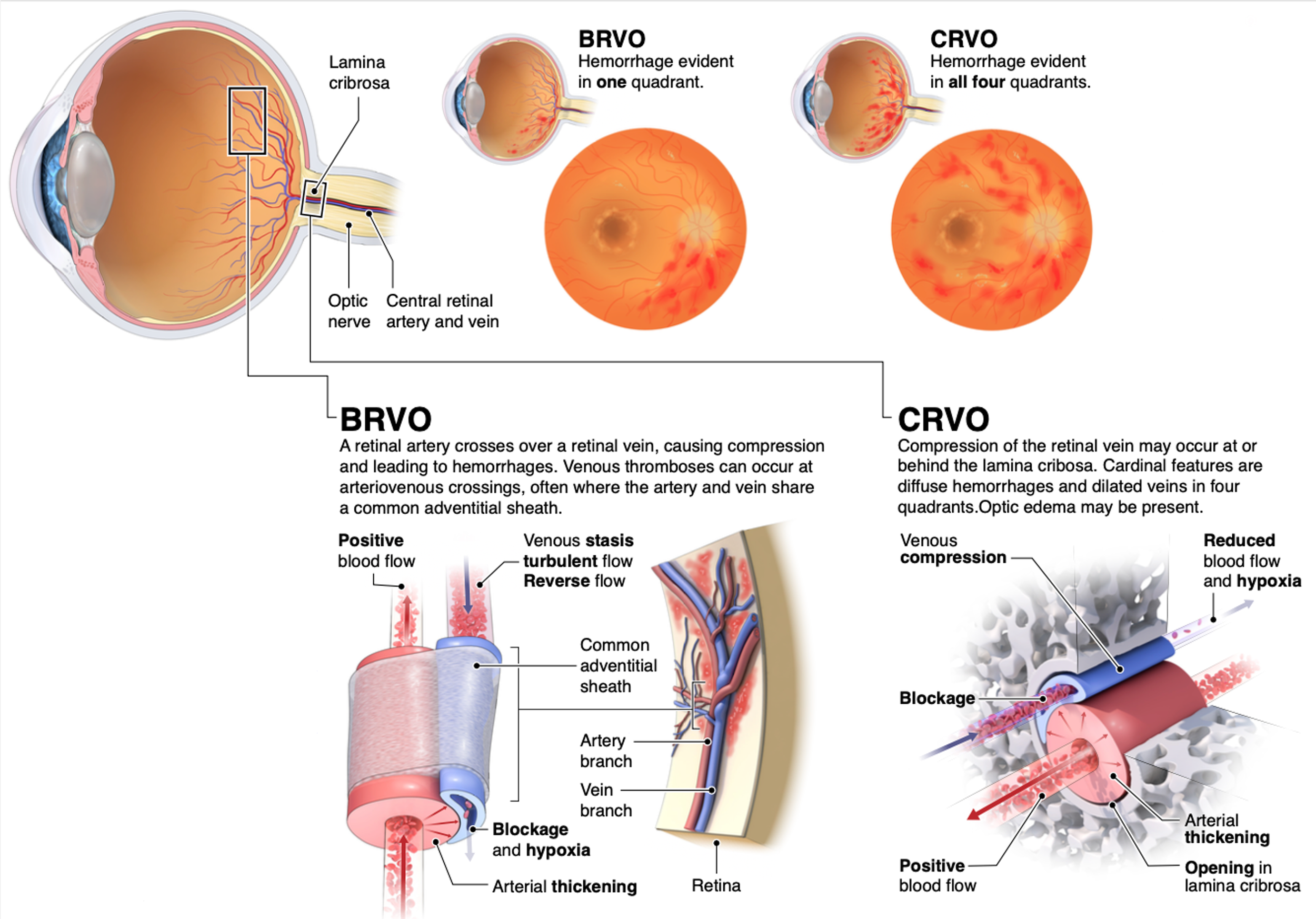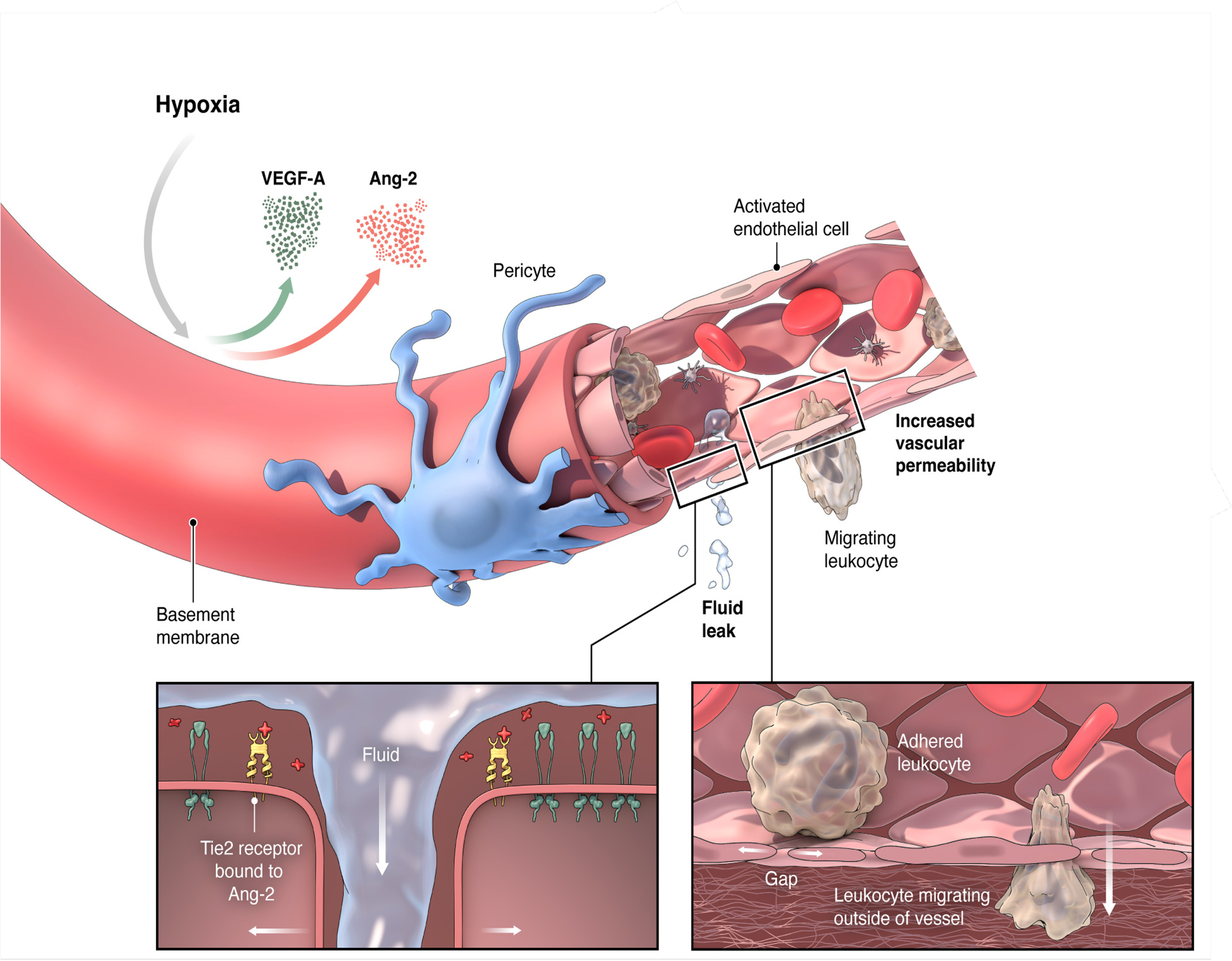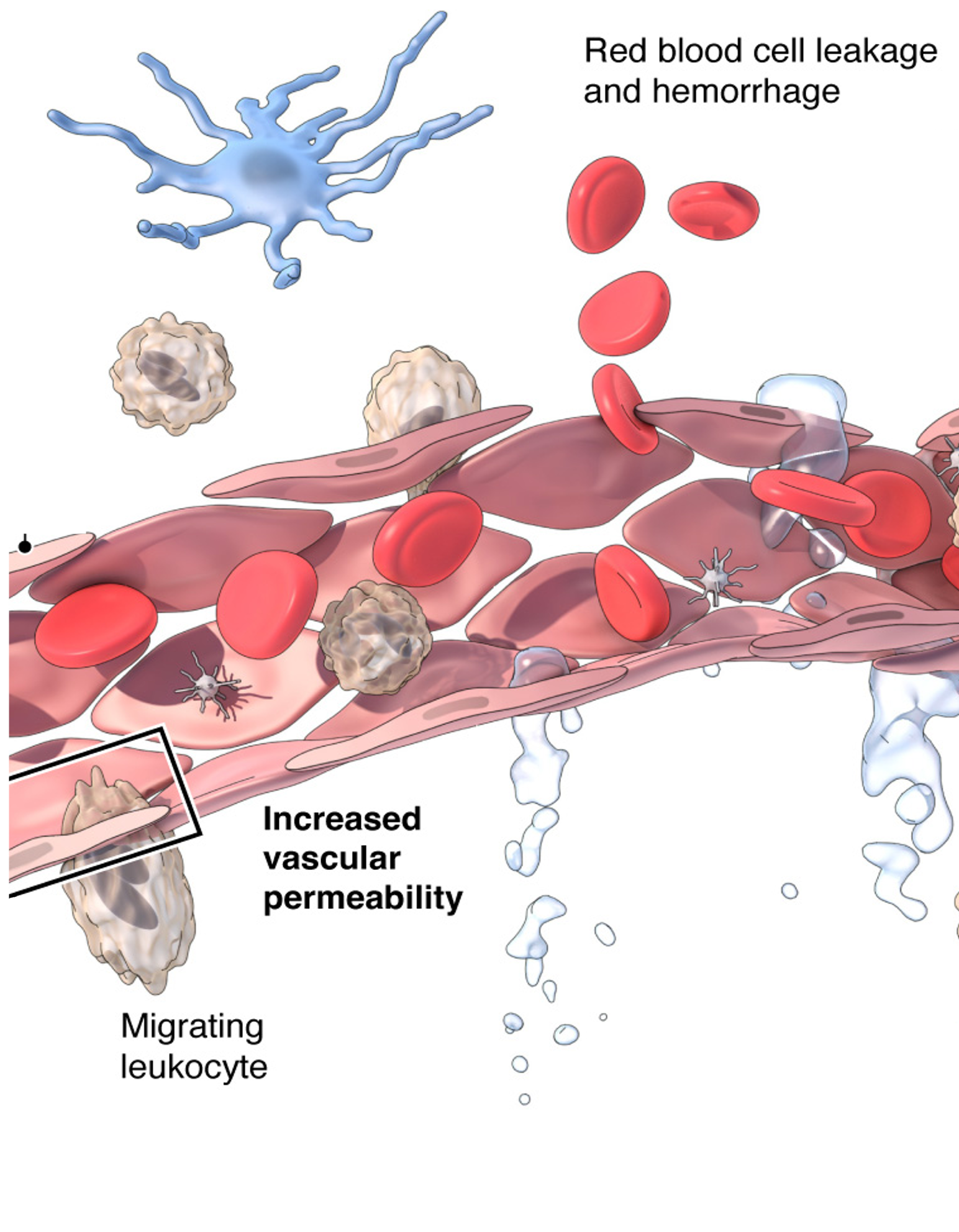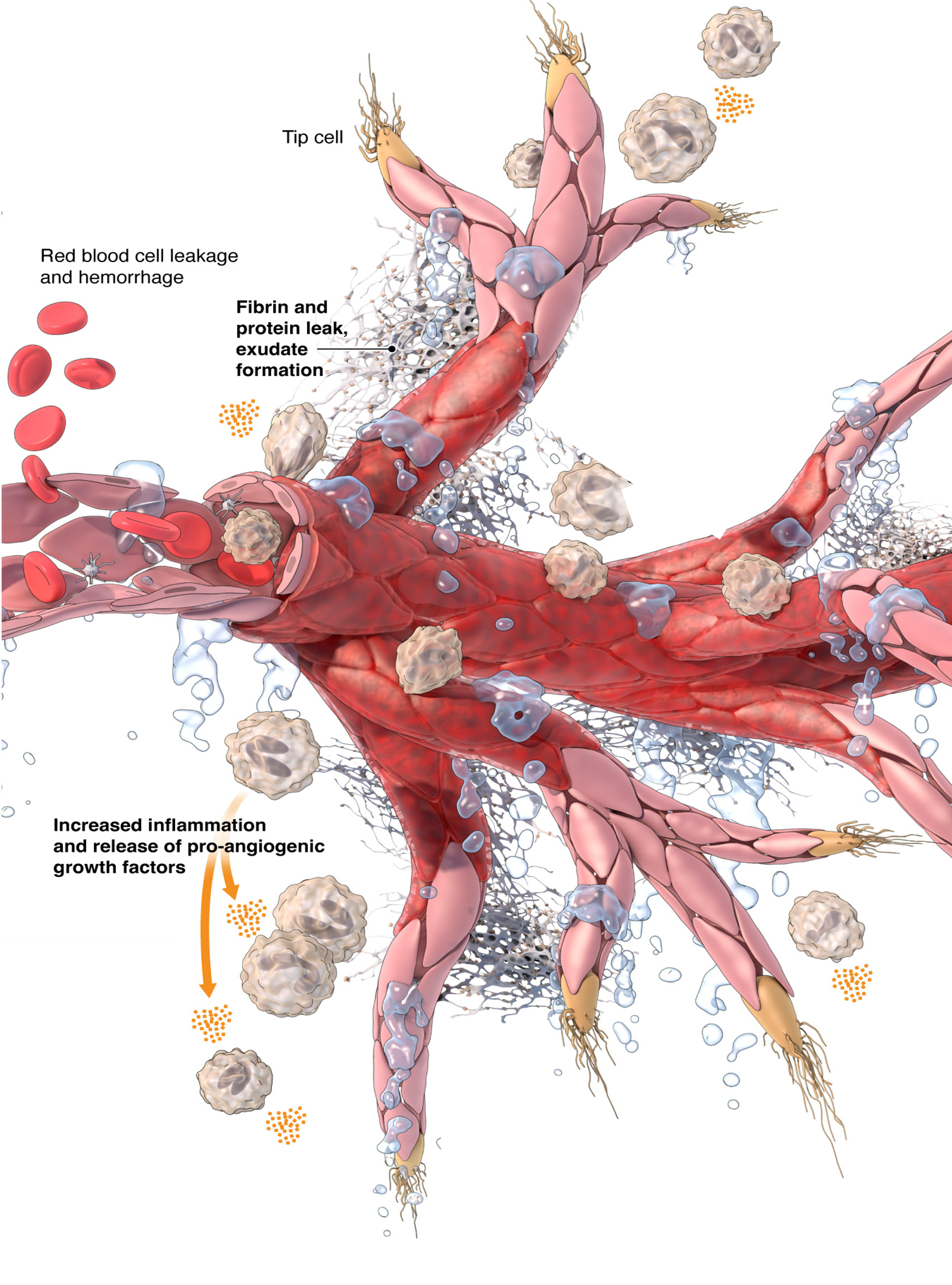
Role of Angiopoietin-2
In retinal Vein occlusion
Scroll below to learn about the role of the angiopoietin-2 (Ang-2) in retinal vein occlusion (RVO). First, learn how RVO occurs and its different forms. Next, learn how RVO leads to elevated Ang-2, leading to subsequent vascular instability.
RVO is the second most common retinal vascular disease and cause of vision loss, after diabetic retinopathy. While VEGF is an established pathological factor in RVO, another factor, Angiopoietin-2 (Ang-2), is overexpressed and is a target for RVO treatment.
RVO Classification by obstruction location
CRVO - Central Retinal Vein Occlusion
BRVO - Branch Vein Retinal Occlusion
Retinal arterial thickening compresses adjacent retinal veins, causing physical compression, sluggish and turbulent blood flow, endothelial damage, and ultimately occlusion of the retinal vein. Thrombus formation, erythrocyte, platelet, and endothelial cell dysfunction are other aggravating factors.
Vascular Compensatory Responses Include:
Endothelial cell recruitment
Collateral channel formation
Neovascularization
Shunt formation
Initial Blockage
RVO leads to Ang-2 over expression and subsequent vascular instability
Vein occlusion leads to disturbed blood flow and vascular inflammation.
Subsequent hypoxia triggers the up regulation of VEGF as well as Ang-2.
Both proteins trigger increased vascular permeability, and Ang-2 specifically destabilizes blood vessels in preparation for neovascularization. Ang-2 reverses vascular stabilization maintained by Angiopoietin-1 (Ang-1).
Key Players
RVO leads to Ang-2 over expression and subsequent vascular instability
1) Upregulated Ang-2 binds to Tie-2, and blocks Ang-1 signaling…
2) …leading to loosening of endothelial tight junctions and vascular leakage,
3) as well as increased inflammation and leukocyte migration.
4) Upregulated Ang-2 leads to pericyte detachment, which further destabilizing vessels.
5) Neovascular sprouting becomes uncontrolled and leads to additional leakage.
6) Macular edema, hemorrhage, and neovascularization leads to progressive vision loss.







